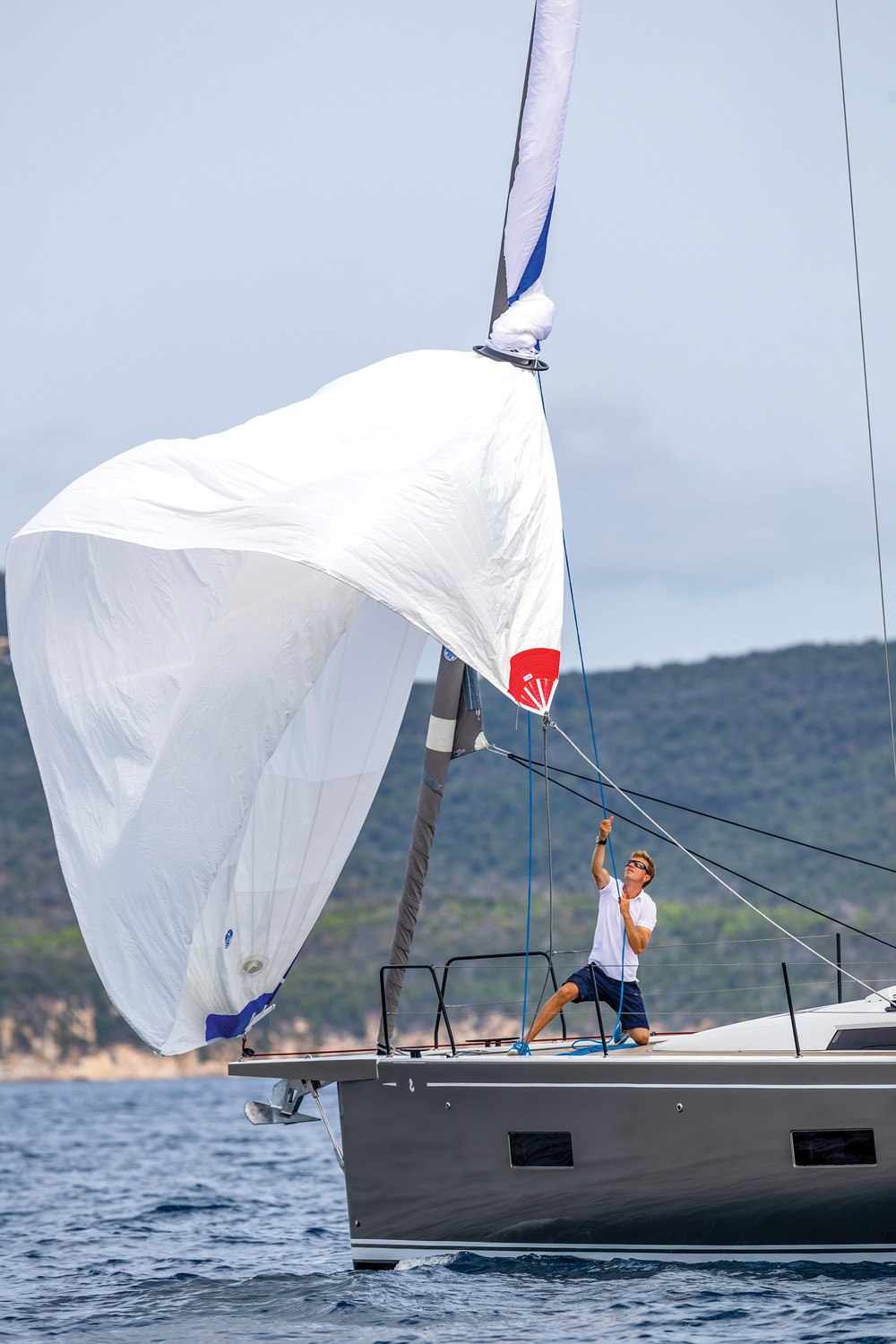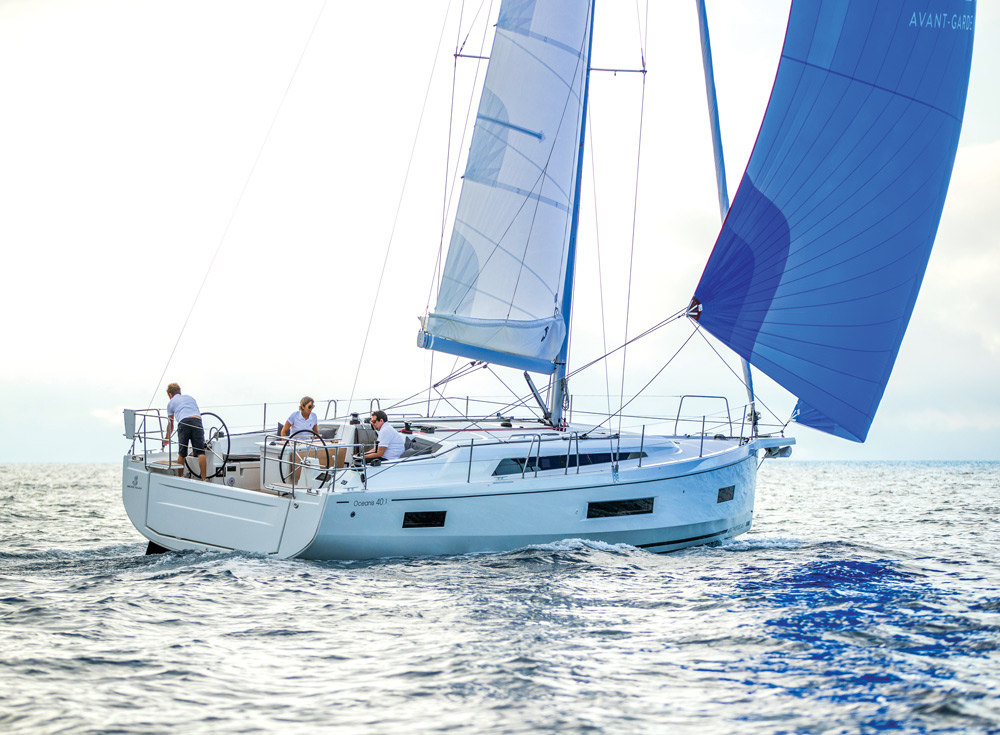Asymmetric spinnaker handling for cruisers
Speedy downwind sailing can be a pleasure with an A-sail when you know how to handle it
There’s no denying the convenience of furling sails for cruising. Code 0s and, more recently, structured luff top-down furling sails with better downwind performance than a code 0 can be game changers for improving downwind performance without a racing crew. And while an asymmetric spinnaker won’t offer the convenience of furling, they’ll help you sail a bit deeper and will be lighter and less expensive than a structured luff top-down furling setup.
Asymmetric spinnakers work best when they can be set from a bowsprit. If a bowsprit isn’t present, the ATN Tacker, which fits around the headstay with a furled headsail, can be used to fly the spinnaker from. The Tacker is held down with a downhaul and can be adjusted to control the height of the sail’s tack, which is connected to the Tacker’s snap shackle.

With the sail hoisted, the snuffer is easy to raise with the control lines. When the snuffer is pulled up, the sail can be trimmed in.
Trim to achieve a small amount of curl on the luff. For cruising on a reach, aim to ease out until you find a curl, then trim in until a bit of curl flutters in and out. To sail deeper, you’ll need to ease more aggressively to help the sail project out from behind the mainsail and ease the luff to windward. If you’ve set from a bowsprit you can ease the tackline a bit, which can help with rotating the sail to windward. This can make the sail a bit unstable and can make trimming more difficult, so don’t ease the tack off too much.
Spinnakers typically sheet to a block that is far aft, and while this sheeting angle will work for some points of sail, it may need adjustment for others. Rigging a twing on the sheet helps control the sheeting angle. A twing can be as simple as a small snatch block connected to the sheet with a line and led to another block on the rail or deck usually near the middle of the rail. Adjust the line to change the sheeting angle, but make sure not to close off the leech of the sail.
When it comes time to jibe, you’ll be pulling the new sheet all the way around the outside of the sail or on the inside, between the luff and the headstay. This is a decision you’ll have to make before you set so the sheets are set up properly. Outside jibes, which are a necessity on many boats with a small bowsprit or no bowsprit, carry with them the danger of the new sheet falling over the bow. Some sails have stiff sheet keepers built into the tack for the sheet to catch on during jibes. Other sailors rig up a batten to use as an extension of the bowsprit to keep the sheet from falling over the bow.
Keeping the sheet management in mind, the trimmers should ease the old sheet to the headstay as the helmsman turns the boat down. When the clew is about to reach the headstay, the old sheet can be blown, all while the new sheet is hauled in as quickly as possible. Grind in the new sheet to fill the sail then quickly ease out to the correct trim.

If jibing, and the potential for problems, seems intimidating, there is always the option of pulling down the snuffer, wrestling the snuffed sausage of spinnaker around the headstay and then redeploying the spinnaker on the other side.
Dousing the spinnaker probably presents the biggest chance of something going wrong and nothing will sour a great downwind run more than a dramatic douse.
The douse starts with the helmsman bearing away to blanket the spinnaker with the main. Simultaneously the trimmer should give a big ease on the sheet (the twing should be removed), collapsing the spinnaker. This allows a crewmember to apply a bit of muscle to pull the snuffer down. When the snuffer is down and secured, ease the halyard down, and get the sail on deck or down the forward hatch.
Sailing with an asymmetric spinnaker takes a bit more crew work than just poling out a genoa, but the performance boost and pure joy of sailing under spinnaker makes the effort worth it.

Comments